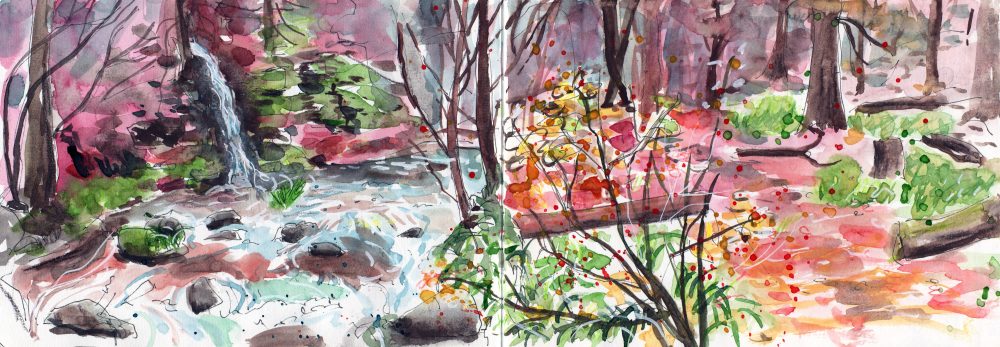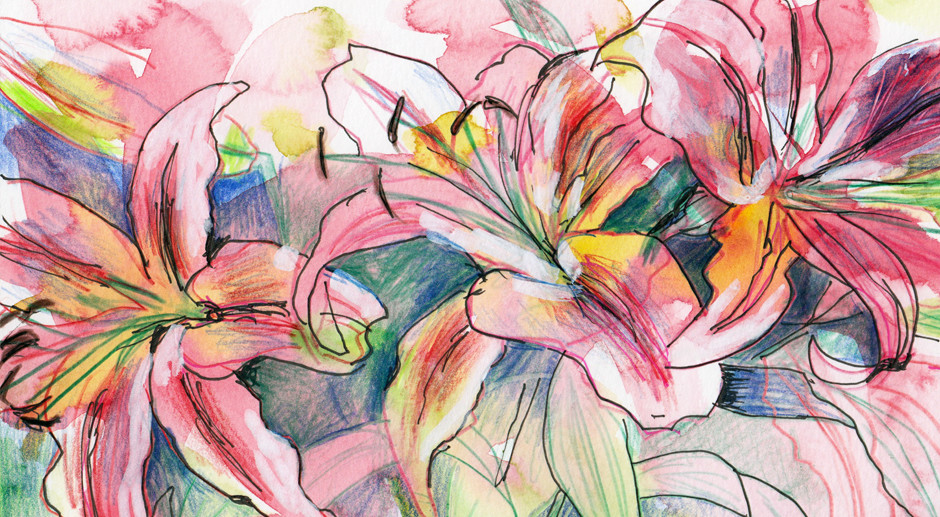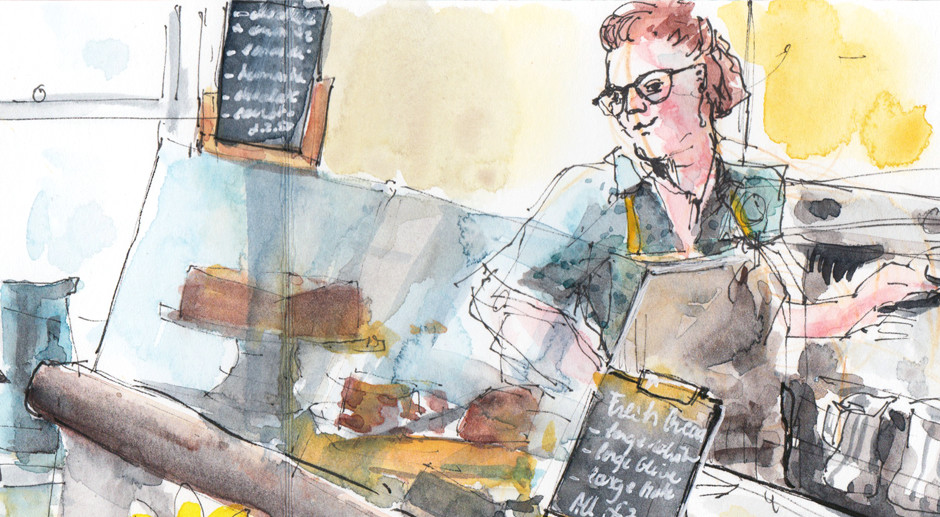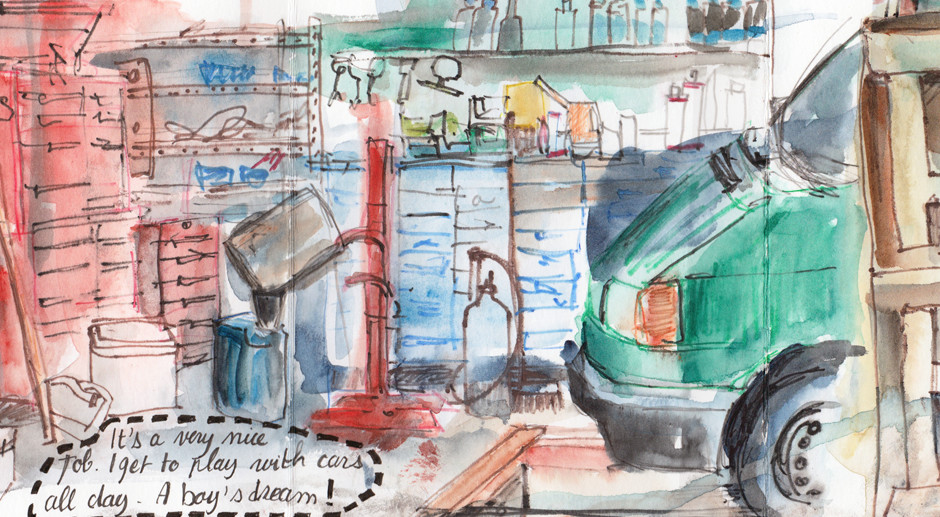The original version of this article was a sample chapter for a book on quick landscapes sketches for beginners. The editor had commissioned three chapters: sketching water, drawing rocks and this one on drawing

When they asked me to write the book, I had other commitments and couldn’t deliver the work to their time scale. So they found someone else to write the book and my text and images were never used.
I know how to articles useful when you are starting out. The structured instructions can also make beginners feel safe enough to try drawing or painting new or difficult subjects. So here you go – I hope you enjoy it!
Drawing texture in landscapes
Water, clouds, rocks, trees, grasses all have a distinct feel and appearance. Here I’ll demonstrate ways to translate those characteristics on paper to sketch expressive landscapes in pen, pencil, and watercolour. I’ll show you how to use a combination of pen, brush and pencil marks to draw texture and make lively sketches with a sense of depth.

Patterns and rhythm
Before you start sketching, look carefully and observe patterns, movement, and rhythm on different parts of the landscape. With a pencil, draw thumbnails of the patterns you see. Try and give an impression of the texture and movement. Use lines, dots scribbles and vary the pressure from light to strong. Think of the marks you are making as music or dance – fast, slow, loud bold or light and as quiet as a

Mark making: pen or pencil
Building on the previous exercise, choose a simple landscape view and make an expressive drawing in pen or pencil.
Rely on feeling and observation. Keep your gestures fluid and marks loose. Also use a variety of lines and dotted marks to bring out the characteristics of your subject. The quality of your pen or pencil strokes – direction, length, energy, strength, will give an impression of the texture of your subject.
To show dark tone, make your marks denser. Leave highlights white. You’ll notice the texture is most visible in mid-tone areas.
In addition, try to look at Vincent Van Gogh’s drawings and see how he uses pen strokes to show texture and tone.

Drawing texture with paint
You can show texture with paint in a similar way.
Paint thumbnail images that focus on specific surfaces: leaves, grasses, tree bark, water.
Use brush strokes to paint marks and patterns that give an impression of texture and movement. In addition, you could experiment and make marks drawing in wet watercolour with the blunt end of a paintbrush or a twig.
You can also use splashes to give your painting a sense of texture. For example, load your brush with paint and either tap it on your hand to splash paint or flick the bristles with your fingers.

Create depth
You can use textural marks to help create a sense of depth and sketch a landscape scene with a distinct foreground, middle ground, and background. For example, the closer the subject is, the more detail and texture you will see.

Take it further
Bring all the ideas we explored in this section together and make a sketch that uses a combination of pen, pencil and paint marks to show texture.





Hi!
I love your recipe illustrations! I was wondering if you sell prints?
Thanks!
Lovely flowers too!
Karen
Thanks Karen, sorry I have only just seen your comment – yes I can sell prints of recipes. If you want to email me at sophie@sophiepeanut.com to let me know which recipe/picture you like and where you live I will let you have the prices .